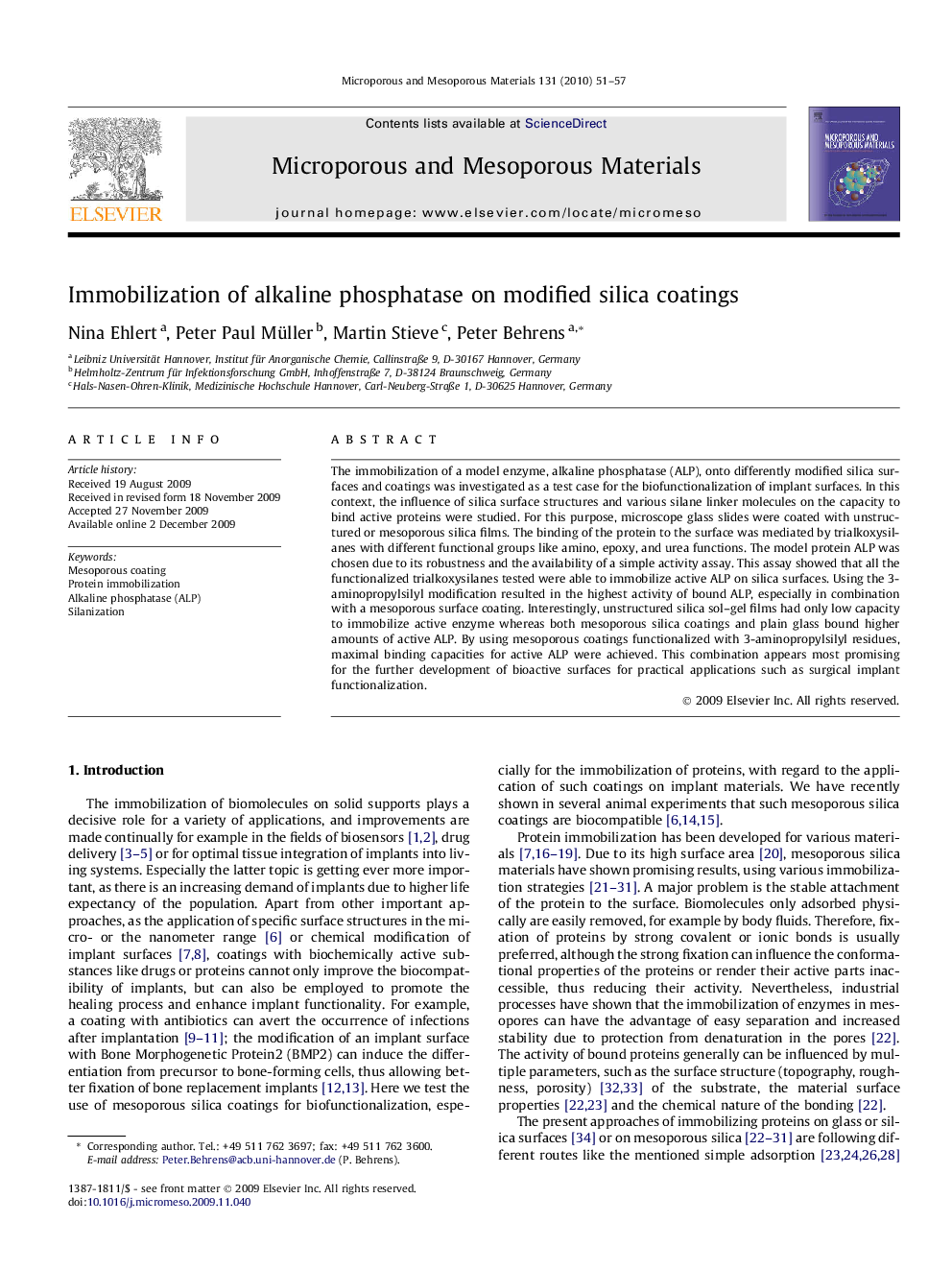| کد مقاله | کد نشریه | سال انتشار | مقاله انگلیسی | نسخه تمام متن |
|---|---|---|---|---|
| 75825 | 49125 | 2010 | 7 صفحه PDF | دانلود رایگان |

The immobilization of a model enzyme, alkaline phosphatase (ALP), onto differently modified silica surfaces and coatings was investigated as a test case for the biofunctionalization of implant surfaces. In this context, the influence of silica surface structures and various silane linker molecules on the capacity to bind active proteins were studied. For this purpose, microscope glass slides were coated with unstructured or mesoporous silica films. The binding of the protein to the surface was mediated by trialkoxysilanes with different functional groups like amino, epoxy, and urea functions. The model protein ALP was chosen due to its robustness and the availability of a simple activity assay. This assay showed that all the functionalized trialkoxysilanes tested were able to immobilize active ALP on silica surfaces. Using the 3-aminopropylsilyl modification resulted in the highest activity of bound ALP, especially in combination with a mesoporous surface coating. Interestingly, unstructured silica sol–gel films had only low capacity to immobilize active enzyme whereas both mesoporous silica coatings and plain glass bound higher amounts of active ALP. By using mesoporous coatings functionalized with 3-aminopropylsilyl residues, maximal binding capacities for active ALP were achieved. This combination appears most promising for the further development of bioactive surfaces for practical applications such as surgical implant functionalization.
Journal: Microporous and Mesoporous Materials - Volume 131, Issues 1–3, June 2010, Pages 51–57